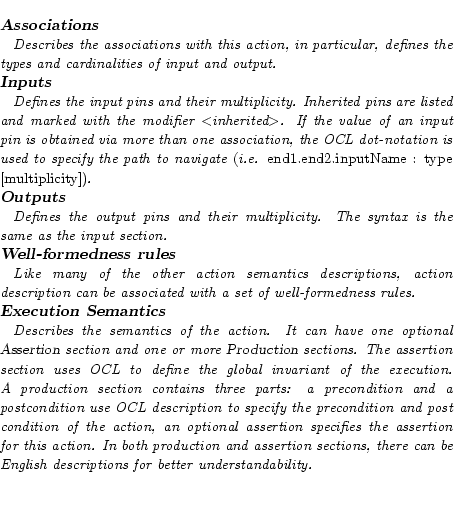 |
An action description describes the semantics of an action. It reuses the OCL language, but is not limited to specifying constraints. Its basic components are shown in Table 3, some of which are optional, while the others must be provided, even if their body is just none.
An example of action description is given in Table 4[AILKC+00]. It describes the CreateObjectAction, which is statically associated with a class and creates an object at run-time. No input is required. The only output is the new object on the output pin. No assertion section is needed. The well-formedness rules assure the well-formedness of the execution.